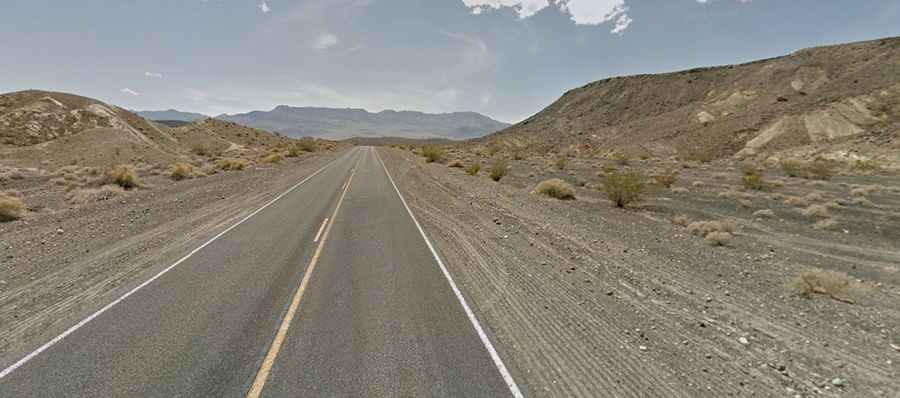Driving the scenic road to Ubehebe Crater in the Death Valley NP
Ubehebe Crater Road is a paved road located in the desolate northern section of Death Valley National Park, in the US state of California, leading to Ubehebe Crater, a large volcanic crater of the Ubehebe Craters volcanic field.

Where is Ubehebe Crater?
The crater is located in the northern part of Death Valley National Park, in the Mojave Desert of California. The crater is about 5 miles north of the northernmost entrance to the park.
What is Ubehebe Crater?
Ubehebe Crater is a maar volcano, formed by a violent volcanic explosion when hot magma came into contact with underground water, causing a steam explosion. It’s a mile and a half wide (2.4 kilometers) and 600 feet (180 meters) deep. It’s one of the many unique geologic features of Death Valley.
How long is the road to Ubehebe Crater?
The road to the crater is 9.01km (5.6 miles) long starting from Scotty's Castle Road. This well-signed, paved road leads to Ubehebe Crater and the stunning gravel Racetrack Valley. The drive out at sunrise is just as spectacular.
Take care with the wind
Wind is common in the desert, especially in the spring. Dust storms can suddenly blow up with approaching cold fronts. Winds at the rim of Ubehebe are very strong and often gust above 50 mph (80 km/h). Please stay on the trail since the crater rim and nearby gullies are composed of very loose material making them unstable and dangerous. Cell phones do not work in most parts of the park, do not depend on them.
How to get ready before driving in Death Valley?
Death Valley is one of the hottest places in the world, with extreme climatic conditions and the world-record highest air temperature of 134°F (57°C). Visitors should drink plenty of water, avoid hiking in the heat, and stay on paved roads in summer. If a car breaks down, stay with it until help arrives and carry extra water for emergencies. Symptoms of heat illness include dizziness, nausea, and headache, requiring immediate action to get out of the sun and hydrate. To prevent accidents, follow speed limits, use lower gears on steep descents, and wear seatbelts. Beware of rattlesnakes, scorpions, and spiders. Avoid canyons during rainstorms, and stay alert for water on roads. Avoid mine tunnels due to instability and hazards. Hikers and backpackers should be self-reliant, carry maps, inform others of their plans, and obtain a backcountry permit. Cell phones may not work in many areas, so don't rely on them. Drink at least 2 to 4 liters of water daily and dampen clothing to cool down.